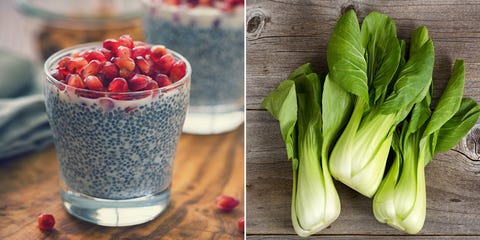
GETTY IMAGES
Ever since you were a little kid, you were told to drink lots of milk because it would help you build strong bones, thanks to its abundance of calcium—which is actually the most prevalent mineral in your entire body. Your nerves, muscles, and hormones depend on calcium to function properly, but nearly all of your body’s calcium is stored in your bones, according to the
National Institutes of Health (NIH).
While running low on calcium isn’t too common for most adults, our intake tends to drop when we’re most at risk for
osteoporosis, a condition in which the bones become weak, increasing the risk of life-threatening falls. In a
study published in
The Journal of Nutrition, researchers found that less than 10 percent of women aged 51 or older met the recommended calcium intake from their diet alone—yet the
National Osteoporosis Foundation recommends more than 1,200 milligrams (mg) of calcium daily for that age group.
For most adults, 1,000 mg of calcium per day should suffice, says the NIH. That can feel like a big number, especially if you avoid dairy products due to GI issues like lactose intolerance. The good news is that there’s an easy fix for that: eat a greater variety of foods!
It’s true that cow’s milk is one of the most concentrated sources of the mineral at about 300 mg per cup (or 8 ounces)*. Plus, it contains
vitamin D, which actually helps your body absorb calcium. However, there are
so many other beneficial sources of calcium, even if you tend to avoid animal products.
You’ll find dairy products on this list, but some other options may surprise you. For instance, certain leafy greens pack lots of calcium, while other similar leaves have zilch. Ready to get your fix? Here, 14 solid ways to get your daily dose of calcium that don’t include glugging a glass of milk.
1Kale
Yes, you can find loads of calcium in plant foods! Kale is one of the best sources—one cooked cup packs 177 mg of calcium, while one raw cup delivers 53 mg. It’s even more bioavailable than the calcium in milk, meaning your body has an easier time absorbing it, says
Connie M. Weaver, PhD, distinguished professor and department head of nutrition science at Purdue University.
Not all greens are created equal, though. Oxalic acid—which is prevalent in plants like spinach, chard, and beet greens—binds to calcium, which can mess with your body’s ability to absorb it properly. Even though spinach technically has a lot of calcium, it’s only a tenth as bioavailable as that from milk because of the oxalic acid, says Dr. Weaver, “so it’s a terrible source of calcium.”
Try it: You don’t need to fill up on salads to enjoy kale. This
garlic shrimp and kale stir-fry is an easy and flavorful way to sneak in the dark leafy green with some lean protein and satisfying carbs.
2Bok choy
Known as Chinese cabbage, bok choy also delivers the goods. One cup of the raw plant contains 74 mg of calcium, while one cooked cups offers 158 mg. It’s one of the few plant food studied that has especially high calcium absorption, says Dr. Weaver.
3Yogurt
It’s no secret that dairy products are a great source of calcium, but you don’t have to drink milk to get your fix. Take plain, low-fat yogurt for example. The average serving size of 8 ounces (or 1 cup) has a whopping 448 mg of calcium. On top of that, you’ll get more than 10 grams of protein and roughly 4 grams of good-for-you fats, which will help keep you full until your next meal. Throw some berries on top for added sweetness, antioxidants, and fiber.
4Broccoli
Here’s another green plant you can add to your list: just one cup of chopped raw
broccolipacks 43 mg of calcium. If you can’t stand the raw flavor, you’ll get roughly double the calcium in a cooked cup of this crunchy veggie. Bonus: you’ll also get a nice dose of fiber (for your digestion)
potassium (for your heart),
vitamin C (for your skin) and
vitamin A (for healthy immune function and eyes).
5Canned seafood
When it comes to convenience, canned seafood is here to save you lots of time and effort. It takes all the prep-work out of putting together a nutrient-packed meal. You wouldn’t guess that foods like sardines and salmon pack in the calcium, but just one 3.75-ounce can of sardines gets you 351 mg, while 3 ounces of canned salmon delivers 241 mg. Not into fish? Canned shrimp is also a safe bet when it comes to calcium, packing 123 mg in a 3-ounce serving.
Try it: Sardines seem scary, but eating them with foods you already like can help you venture into new flavor territories. This
Italian sardine salad is a tasty place to start.
6Cheese
Cheese is another delicious dairy product that offers lots of calcium, but the amount you get will vary depending on the type you reach for. Some great options include 1 ounce of sliced sharp cheddar (199 mg), part skim milk mozzarella (222 mg), or hard parmesan (336 mg).
While not technically a hard cheese, cottage cheese (which is made from milk curds) is also a great way to sneak in calcium if you prefer it over yogurt. One cup of 2% cottage cheese contains 251 mg of calcium and a whopping 23 grams of protein as an added bonus.
Try it: Let’s be real, calories can add up fast with cheese—but these
guilt-free cheesy recipesinclude healthier options to indulge in, like cauliflower mac and cheese, skillet lasagna, and more.
ADVERTISEMENT - CONTINUE READING BELOW
7Seeds
Sprinkling seeds on top of any dish delivers that much needed crunch, but don’t let the size of them fool you—many seeds are loaded with essential nutrients, including calcium. Just 1 ounce (or 2 tablespoons) of toasted sesame seeds, for example, packs a whopping 280 mg of calcium. The same amount of ever-popular
chia seeds will get you 179 mg.
While nuts, seeds, whole grains, soy isolates, and beans do contain phytic acid, which also binds to calcium, its ability to mess with absorption widely varies or doesn’t have a noticeable effect. For this reason, the
NIH still counts these foods toward your calcium intake—just make sure to eat a wide variety of them if you’re dairy-free!
Try it: Sprinkle seeds on top of your salad, oatmeal, or smoothie bowl for added texture. You can also try whipping up this
mango coconut chia pudding for a sweet and satisfying breakfast.
8Almonds
Almonds are a go-to snack for a reason. Just one serving (roughly ¼ cup or the amount you could hold in your hand) packs tons of heart healthy unsaturated fats, some protein and fiber to tame your hunger, and you guessed it—nearly 100 mg of calcium! Just be sure you control your portions here: one serving already stacks up at about 200 calories.
9Tofu
Calcium-set
tofu is a bone-friendly choice, especially if you avoid animal products. Look for varieties made with calcium sulfate, suggests the NIH. The typical 1/2 cup of fortified tofu will vary anywhere from 250 to 800 mg of calcium, meaning you’ll get roughly the same amount of absorbable calcium as milk, says Dr. Weaver. Tofu is also a great way to sneak in more protein, fiber, and
iron if you don’t eat meat.
Try it: If you think tofu is bland, you haven’t tried it in a hearty
tofu curry, which is full of powerful flavors like
turmeric, garam masala, and ground red pepper.
10Dried figs
Figs are typically known for their sweetness, but their calcium content doesn’t go completely unnoticed. One serving (about 4 figs) has 50 to 60 mg of calcium, along with a decent dose of potassium and fiber.
Try it: Stack figs on top of ricotta—which offers an extra 77 mg of calcium in two tablespoons—in this easy-to-make (and deliciously sweet)
breakfast sandwich recipe.
11Whey protein powder
Beyond its muscle-building benefits (thanks to its complete list of essential amino acids), whey
protein powder offers nearly 90 mg of calcium per scoop, since it’s derived from cow’s milk. And because many brands require a couple of scoops, you could easily double your intake. How to pick a powder that’s actually good for you? Make sure a form of whey is listed as the first ingredient and avoid ones that contain too much sugar or artificial sweeteners.
12Soy milk
Calcium-fortified soy milk contains just as much of the mineral as good old cow’s milk, found Dr. Weaver when she conducted a test on Silk, a popular brand of plant-based milks. Look for calcium carbonate on the label, she suggests, since soy milk fortified with tricalcium phosphate doesn’t perform quite as well.
On top of that, soy milk packs the most protein of all dairy-free milk options at roughly 8 grams per serving (the same as cow’s milk!), one
2018 review of research in the
Journal of Food Science and Technology found.
Try it: Whisk together 2 cups of warmed vanilla soy milk with 1 cup of your favorite brewed coffee for a a
tasty latte alternative.
13Orange juice
Match your milk with a glass of calcium-fortified orange juice instead. Just one cup of the stuff will deliver roughly 350 mg of calcium, along with vitamin D (as long as it is fortified), vitamin C, vitamin A, and even potassium.
14Fortified cereals
We know how hard it is to find a healthy breakfast cereal, but it is possible. Why bother? Beyond their tempting tastiness, cereal brands fortified with calcium can get you anywhere from 100 to 1,000 mg of the stuff.
Try it: No need to get fancy here. Find your favorite low-sugar cereal option and top with lots of fresh fruit and calcium-rich milk of choice. If you want to avoid milk altogether, add your favorite cereal to this
ultimate trail mix recipe.
*All nutrient amounts are sourced via the standard reference food composition database from the United States Department of Agriculture
Additional reporting by Mandy Oaklander

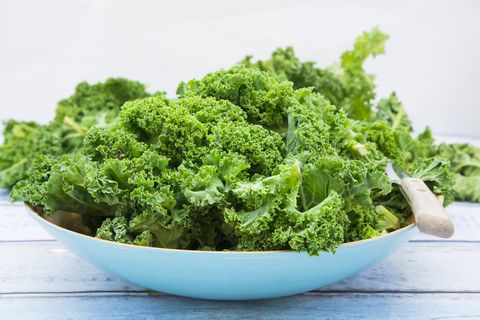
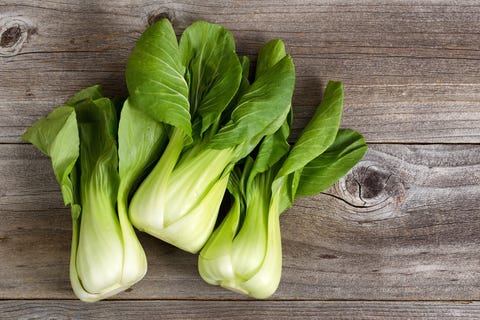
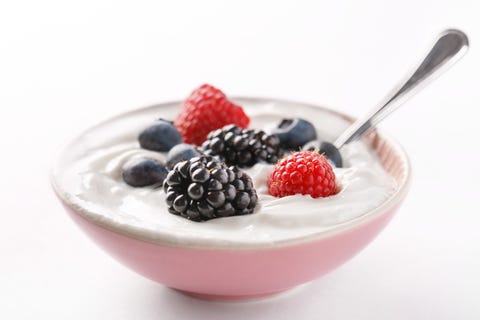
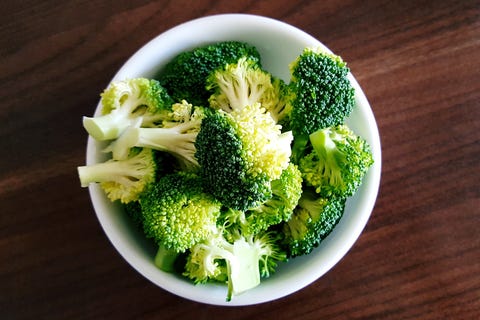
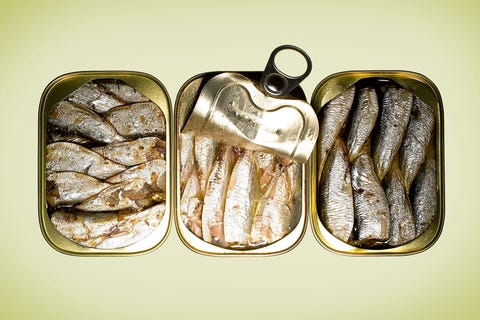


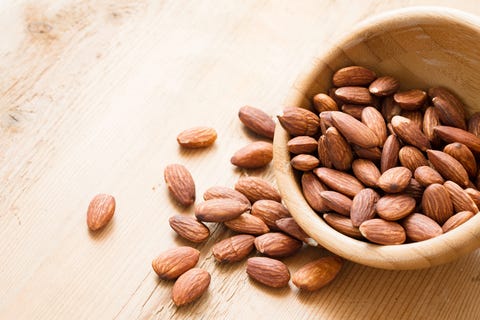
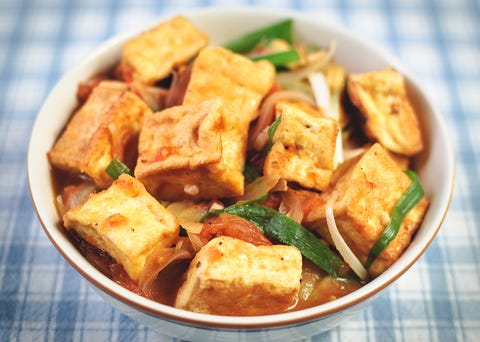
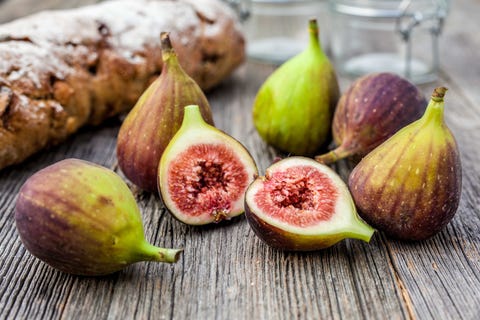
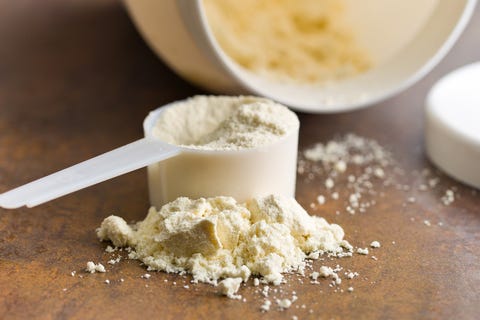



评论
发表评论